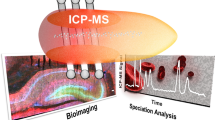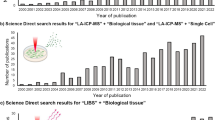Abstract
Quantitative meta-analyses of randomized clinical trials investigating the specific therapeutic efficacy of homeopathic remedies yielded statistically significant differences compared to placebo. Since the remedies used contained mostly only very low concentrations of pharmacologically active compounds, these effects cannot be accounted for within the framework of current pharmacology. Theories to explain clinical effects of homeopathic remedies are partially based upon changes in diluent structure. To investigate the latter, we measured for the first time high-field (600/500 MHz) 1H T1 and T2 nuclear magnetic resonance relaxation times of H2O in homeopathic preparations with concurrent contamination control by inductively coupled plasma mass spectrometry (ICP-MS). Homeopathic preparations of quartz (10c–30c, n = 21, corresponding to iterative dilutions of 100−10–100−30), sulfur (13x–30x, n = 18, 10−13–10−30), and copper sulfate (11c–30c, n = 20, 100−11–100−30) were compared to n = 10 independent controls each (analogously agitated dilution medium) in randomized and blinded experiments. In none of the samples, the concentration of any element analyzed by ICP-MS exceeded 10 ppb. In the first measurement series (600 MHz), there was a significant increase in T1 for all samples as a function of time, and there were no significant differences between homeopathic potencies and controls. In the second measurement series (500 MHz) 1 year after preparation, we observed statistically significant increased T1 relaxation times for homeopathic sulfur preparations compared to controls. Fifteen out of 18 correlations between sample triplicates were higher for controls than for homeopathic preparations. No conclusive explanation for these phenomena can be given at present. Possible hypotheses involve differential leaching from the measurement vessel walls or a change in water molecule dynamics, i.e., in rotational correlation time and/or diffusion. Homeopathic preparations thus may exhibit specific physicochemical properties that need to be determined in detail in future investigations.



Similar content being viewed by others
References
Aabel S, Fossheim S, Rise F (2001) Nuclear magnetic resonance (NMR) studies of homeopathic solutions. Br Homeopath J 90:14–20
Abragam A (1961) Principles of nuclear magnetism. Oxford University Press, Oxford
Anick DJ (2004) High sensitivity 1H-NMR spectroscopy of homeopathic remedies made in water. BMC Complementary and Alternative Medicine 4:15
Anonymous (2004) Homöopathisches Arzneibuch 2004 (HAB). Deutscher Apotheker Verlag, Stuttgart
Atmanspacher H, Römer H, Walach H (2002) Weak quantum theory: complementarity and entanglement in physics and beyond. Found Phys 32:379–406
Barnes J, Resch KL, Ernst E (1997) Homeopathy for postoperative ileus? A meta-analysis. J Clin Gastroenterol 25:628–633
Bastide M, Lagache A (1997) A communication process: a new paradigm applied to high-dilution effects on the living body. Alternative Therapies in Health and Medicine 3:35–39
Baumgartner S, Heusser P, Thurneysen A (1998) Methodological standards and problems in preclinical homoeopathic potency research. Forschende Komplementärmedizin 5:27–32
Becker-Witt C, Weisshuhn TER, Lüdtke R, Willich SN (2003) Quality assessment of physical research in homeopathy. J Altern Complement Med 9:113–132
Bloembergen N, Purcell EM, Pound RV (1948) Relaxation effects in nuclear magnetic resonance absorption. Phys Rev 73:679–712
Cazin JC, Cazin M, Chaoui A, Belon P (1991) Influence of several physical factors on the activity of ultra low doses. In: Doutremepuich C (ed) Ultra low doses. Taylor & Francis, London, pp 69–80
Demangeat JL, Demangeat C, Gries P, Poitevin B, Constantinesco A (1992) Modifications des temps de relaxation RMN à 4 MHz des protons du solvant dans les très hautes dilution salines de silice/lactose. Journal de médecine nucléaire et biophysique 16:135–145
Demangeat JL, Gries P, Poitevin B, Droesbeke JJ, Zahaf T, Maton F, Piérart C, Muller RN (2004) Low-field NMR water proton longitudinal relaxation in ultrahighly diluted aqueous solutions of silica-lactose prepared in glass material for pharmaceutical use. Appl Magn Reson 26:465–481
Elia V, Niccoli M (2000) New physico-chemical properties of water induced by mechanical treatments. A calorimetric study at 25°C. J Therm Anal Calorim 61:527–537
Franks F (ed) (1972) Water—a comprehensive treatise. Plenum, New York
Funk W, Dammann V, Vonderheid C, Oehlmann G (1985) Statistische Methoden in der Wasseranalytik. Weinheim, VCH Verlagsgesellschaft
Funk W, Dammann V, Donnevert G (1992) Qualitätssicherung in der Analytischen Chemie. Weinheim, VCH Verlagsgesellschaft
Hahnemann S (1921) Organon der Heilkunst (6. Auflage). Heidelberg
Jacobs J, Jonas WB, Jimenez-Perez M, Crothers D (2003) Homeopathy for childhood diarrhea: combined results and metaanalysis from three randomized, controlled clinical trials. Pediatr Infect Dis J 22:229–234
Jonas WB, Linde K, Ramirez G (2000) Homeopathy and rheumatic disease. Rheum Dis Clin North Am 26:117–123
Kratky KW (2004) Homöopathie und Wasserstruktur: Ein physikalisches Modell. Forsch Komplentarmed Klass Naturheilkd 11:24–32
Lasne Y (1986) Propriétés des Solutions “Homéopathiques”—Mesure da la Relaxation Magnétique T2. Université Claude Bernard, Lyon
Lüdtke R, Wiesenauer M (1997) Eine Metaanalyse der homöopathischen Behandlung der Pollinosis mit Galphimia glauca. Wien Med Wochenschr 147:323–327
Milgrom LR (2002) Patient-practitioner-remedy (PPR) entanglement. Part 1: a qualitative, non-local metaphor for homeopathy based on quantum theory. Br Homeopath J 91:239–248
Rey L (2003) Thermoluminescence of ultra-high dilutions of lithium chloride and sodium chloride. Physica A 323:67–74
Taylor MA, Reilly D, Llewellyn-Jones RH, McSharry C, Aitchison TC (2000) Randomised controlled trial of homoeopathy versus placebo in perennial allergic rhinitis with overview of four trial series. Br Med J 321:471–476
Vickers AJ, Smith C (2006) Homoeopathic Oscillococcinum for preventing and treating influenza and influenza-like syndromes. Cochrane Database Syst Rev 3: CD001957
Weingärtner O (1990) NMR-Features That Relate To Homoeopathic Sulphur-Potencies. The Berlin Journal on Research in Homoeoepathy 1:61–68
Weingärtner O (2003) What is the therapeutically active ingredient of homeopathic potencies? Homeopathy 92:145–151
Acknowledgments
We thank Tim Logan, Vincent Salters, Jack Skalicky, Hans J. Schneider-Muntau, Afi Sachi-Kocher, Ted Zateslo, and Jeroen Sonke for practical and theoretical help during the NMR and ICP-MS experiments. Critical and helpful comments from four anonymous reviewers are gratefully acknowledged. This work was supported by the Software Foundation, Darmstadt, Germany; Wala Heilmittel GmbH, Boll, Germany; and Dr. Reckeweg & Co. AG, Bensheim, Germany. The sponsors had no influence whatsoever upon design, realization, evaluation, and publication of the study. The experiments comply with the current laws of the countries in which they were performed (USA and Switzerland).
Author information
Authors and Affiliations
Corresponding author
Electronic supplementary material
Below is the link to the electronic supplementary material.
ESM
(PDF 2003 kb)
Rights and permissions
About this article
Cite this article
Baumgartner, S., Wolf, M., Skrabal, P. et al. High-field 1H T1 and T2 NMR relaxation time measurements of H2O in homeopathic preparations of quartz, sulfur, and copper sulfate. Naturwissenschaften 96, 1079–1089 (2009). https://doi.org/10.1007/s00114-009-0569-y
Received:
Revised:
Accepted:
Published:
Issue Date:
DOI: https://doi.org/10.1007/s00114-009-0569-y




